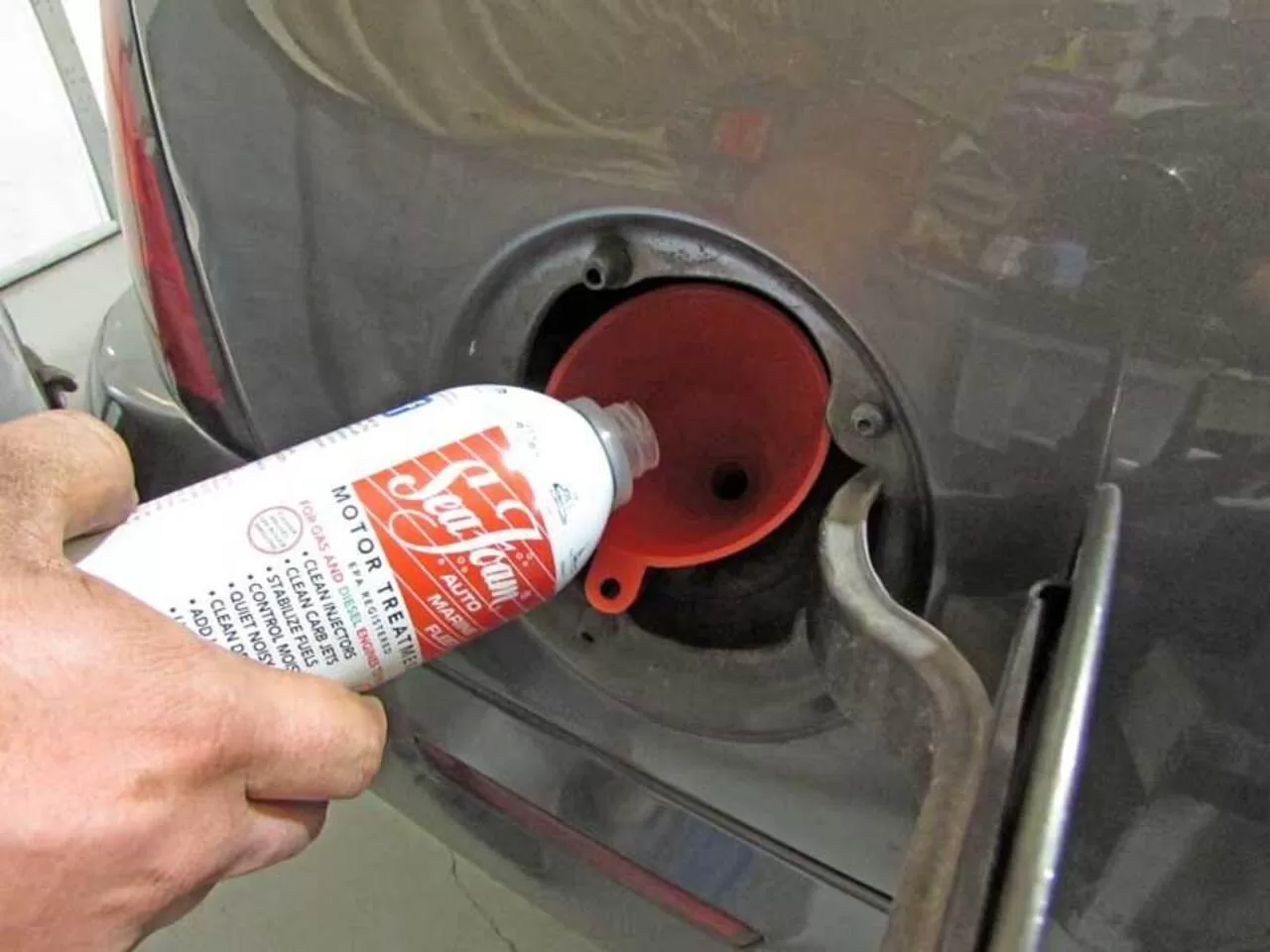As a car owner, I recently dealt with a common problem many vehicle owners face – too much seafoam in the gas tank. In this blog, I will share my experience and the things I learned about seafoam, its negative effects, and what happens when you add too much of it to different components of your car.
What Is Seafoam?
Seafoam has been a fuel additive on the market for over 70 years. It is a petroleum-based product comprising isopropyl alcohol, pale oil, and naphtha. It is a popular fuel additive designed to clean and maintain your car’s engine and clean piston rings. Its primary use is to eliminate carbon build-up in the engine and reduce emissions.
What is the use of Seafoam?
Seafoam is a versatile additive used in various automotive, marine, and industrial applications. It is a powerful cleaner and protector that can help to remove contaminants and carbon deposits, reduce wear and tear on equipment, and improve performance and efficiency.
Whether you are looking to clean and protect your vehicle’s system or improve your marine’s performance, it is a reliable and practical choice. Here are some of the most common uses of Seafoam:
-
Fuel System Cleaner
Seafoam is an adequate fuel system cleaner that can help remove carbon deposits and other contaminants from the fuel system, including fuel injectors, carburetors, and intake valves. It can also help to lubricate engine components and reduce engine noise.
-
Engine Oil Additive
Seafoam can be added to engine oil to speed up the engine’s cleaning and protection. It can help reduce engine sludge and varnish, fuel economy, and emissions.
-
Transmissions
Seafoam can be used to clean and protect automatic and manual transmissions. It can help to remove contaminants and varnish that can cause shifting problems, reduce transmission wear, and improve shifting performance.
-
Power Steering
Seafoam can clean and protect power steering systems. It can help remove varnish and other contaminants that cause power steering problems, reduce power steering fluid leaks, and improve power steering performance.
-
Hydraulic Systems
Seafoam can be used to clean and protect hydraulic systems. It can help to remove contaminants that can cause hydraulic system problems, reduce hydraulic fluid leaks, and improve hydraulic system performance.
-
Marine Applications
Seafoam can be used in marine engines, outboard motors, and other marine equipment to clean and protect these components. It can help to remove contaminants and carbon deposits, reduce engine noise and emissions, and improve fuel efficiency.
-
Lawn and Garden Equipment
Seafoam can be used in lawnmowers, chainsaws, and other small engines to clean and protect these components. It can help to remove contaminants and carbon deposits, reduce engine wear, and improve engine performance.
-
Industrial Applications
Seafoam can be used in various industrial applications, including compressors, generators, and other equipment. It can help to remove contaminants and carbon deposits, reduce wear and tear on equipment, and improve performance and efficiency.
What are Seafoam’s Negative Effects?
While seafoam can be a helpful tool in maintaining your car’s engine, it also has negative effects if not used correctly. Overusing seafoam can cause damage to your engine’s components, including the catalytic converter and oxygen sensor. It can also cause engine parts to corrosion, leading to costly repairs.
-
Too Much Seafoam in Lawn Mower
Adding too much seafoam to your lawn mower can also have negative effects on its engine. Overusing seafoam can cause your lawn mower’s carburetor to flood, leading to starting problems. It can also damage the fuel system, causing the engine to run poorly.
-
Too Much Seafoam in Oil
Your car’s motor may be harmed by adding excessive seafoam to your oil. Seafoam is not meant to be used as a primary engine oil, and overuse can damage the engine’s internal components, including bearings, pistons, and seals.
-
Too Much Seafoam in Gas Tank
The motor of your car could suffer if you put one or two cans of seafoam in gas tank. It can create a lean fuel mixture, causing your engine to run poorly. It can also damage the fuel injectors, spark plugs, and fuel filters. Overuse of seafoam can lead to costly repairs and should be avoided.
When might I add sea foam to my fuel system?
A motor cleaner and efficiency enhancer, seafoam is a gasoline ingredient. Add Seafoam to your gas tank when your engine shows rough idling, hesitation, or other performance issues. You can also use it as a preventative measure by adding it to your gas tank every 3,000 to 5,000 miles. Always adhere to the product’s label directions and refer to your car’s owner’s manual for more detailed advice.
To what extent does sea foam remain in an engine?
The recommended duration for leaving Seafoam in your engine depends on the specific application and the type of Seafoam product used. For example, for a basic fuel system cleaning, you can add Seafoam to your fuel tank and usually drive until the tank is nearly empty.
Add Seafoam directly to the engine’s oil crankcase for a more thorough cleaning and let it sit for several hours or overnight before changing the oil. It’s essential to follow the instructions on the Seafoam product you’re using and consult your vehicle’s owner manual or a trusted mechanic for specific guidance.
Bottomline
In conclusion, while seafoam can be a helpful tool in maintaining your car’s engine, it’s essential to use it correctly and avoid overusing it. Adding too much seafoam in different components of your car, including the gas tank, oil, and lawn mower, can have negative effects and lead to costly repairs. Always read the instructions and use seafoam as the manufacturer directs to keep your car running smoothly.
FAQ
-
Can I put seafoam in a full gas tank?
Yes, Seafoam adds to a full gas tank. It is recommended to add one ounce of Seafoam per gallon of fuel. However, following the manufacturer’s instructions and staying within the recommended dosage is essential.
-
Can too much Seafoam damage the engine?
Using too much Seafoam in your engine can cause damage. Excessive use of Seafoam can lead to engine oil thinning, which may reduce its lubrication capabilities and cause harm to engine parts.
-
How long does it take for Seafoam to work in a gas tank?
The time it takes for Seafoam to work in a gas tank may vary depending on several factors, such as the amount of Seafoam used the size of the gas tank, and the engine’s condition. Typically, it may take around 5-15 minutes for Seafoam to start working in the gas tank.
-
Can you use too much Seafoam in a motorcycle?
Using too much Seafoam in a motorcycle can be harmful to the engine. Following the manufacturer’s recommendations for the appropriate amount of Seafoam is essential. Excessive use of Seafoam may cause engine oil thinning, which can lead to reduced lubrication and engine damage.




